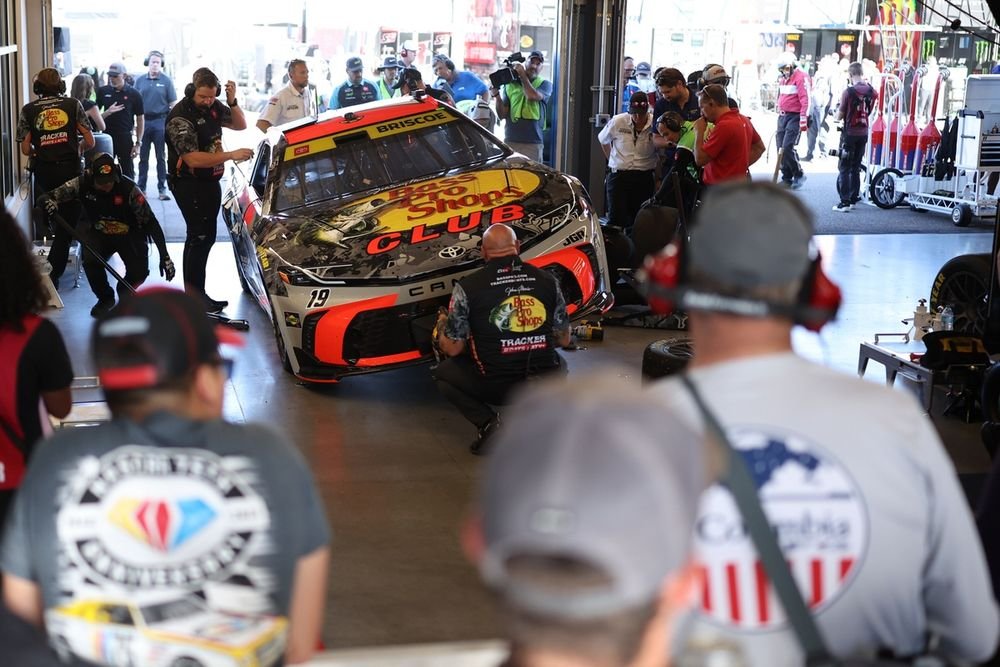During the hour-long practice session in Phoenix, the issues began when championship contender Chase Briscoe lost a left rear within five minutes of the start of the session. It was the first of many, and those failures are likely not an anomaly but a result of teams being aggressive with suspension adjustments and tire pressures.
Phoenix Raceway is a unique type of oval because it is asymmetric, which requires a compromise when it comes to suspension setup for making speed: the entry into turn 1 coming off the dogleg is quite different to the entry into turn 3 coming off the back straight.
Cup teams want it all, so they try to push the setup of the car, ranging from tire pressures and cambers to even mixing up brake pad compounds.
A combination of factors
Cut tire during Phoenix Cup practice
NASCAR Cup cars run spec shocks in all four corners of the car, which means teams can’t build shocks like they have done in the past. One part of those spec shocks is a limiter that is installed internally in order to prevent the cars from bottoming out and damaging the underbody. That’s not all.
When a car hits those shock limiters, the only thing that dampens the load between the car and the track surface is the tire, putting tremendous load into the Goodyear racing slicks.
Teams want to have the cars as low as possible in order to maximize aero because the diffuser creates more downforce as it gets closer to the surface of the track.
In addition to those setup compromises, teams also want to start practice sessions and eventually the race with tire pressures as low as possible. As the tires will naturally build temperature and pressure, the low initial pressures are meant to protect the compound without too-high pressures that will impact performance later in a run.

Chase Briscoe in the garage, Joe Gibbs Racing Toyota
Photo by: James Gilbert / Getty Images
All of those factors combined can lead to a situation like we’re seeing today. Cup cars went out on track with low tire pressures, and as the cars start bottoming out, the sidewall of the tire bends and gets pummelled between the edge of the wheel and the track surface.
The spike loads created when these shocks bottom out can be thousands of pounds where the tire contacts the surface. Those forces have to go somewhere.
That situation results in the steel belts in the sidewall of the tire cracking and eventually breaking, which results in the side of the tire losing its structure. Eventually, as temperature in the tire rises and pressure rises, the tire bursts through those cracks and goes down — fast.
Drivers that are lucky might be able to catch the car and ride back in and make adjustments, while others can end up in the wall.
The quick and easy solution is often to raise tire pressures or increase camber. At Phoenix, teams quickly started making changes in order to get their drivers back out to practice and gather data for race or qualifying setups. There will be a fine line to thread for many as teams decide how to adjust the cars for the race because the consequences will be much larger.
We want your opinion!
What would you like to see on Motorsport.com?
Take our 5 minute survey.
– The Motorsport.com Team
Read the full article here


